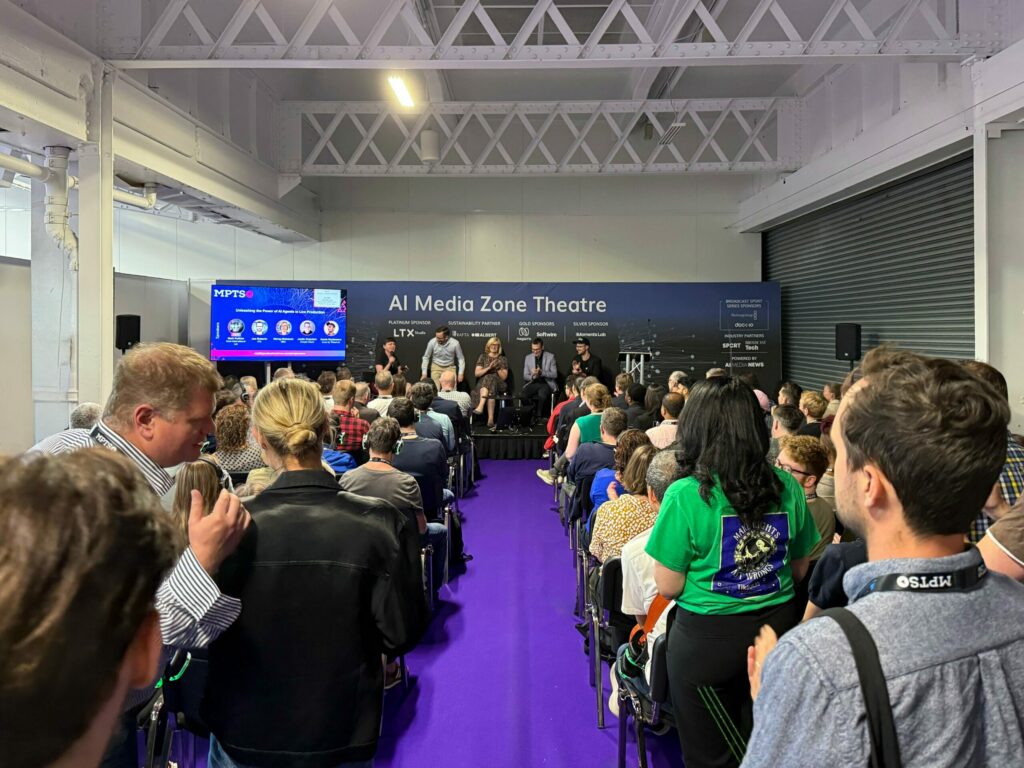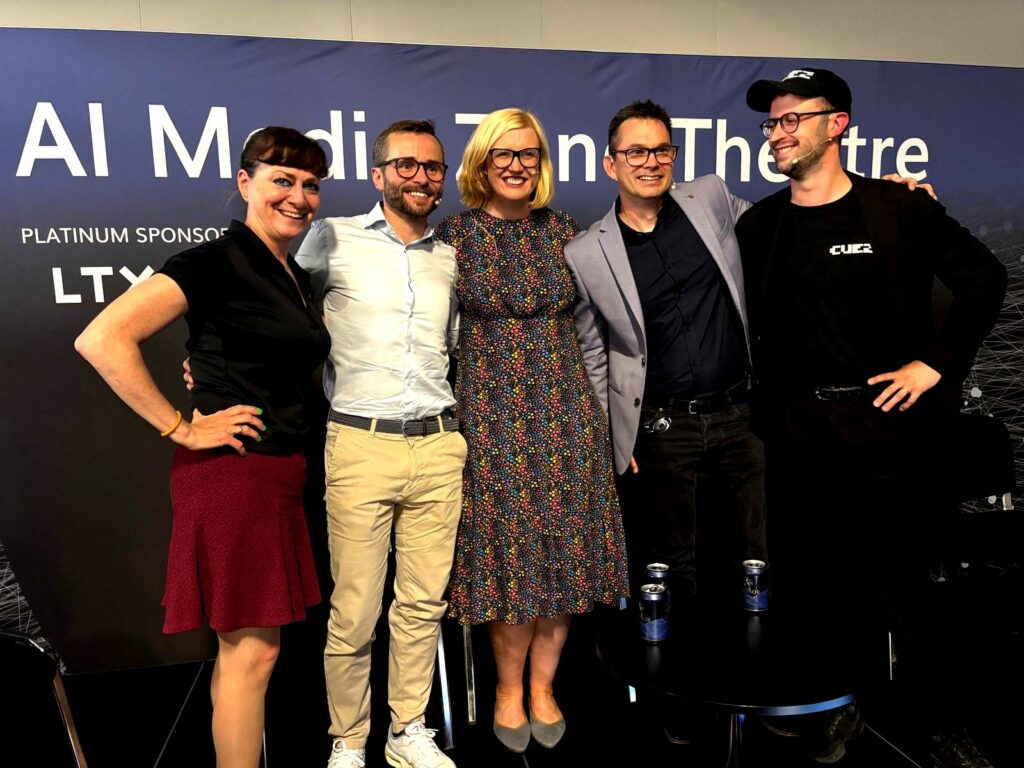Trigger warning: Simon, our CMO, wrote this with a little help from ChatGPT. Simon is 45, so expect a lot of references for old people (apologies for that).
This week at MPTS 2025, the AI Media Zone buzzed with energy as forward-thinking broadcasters, technologists, and creatives gathered to discuss what’s next for live production. That was Chat GPT, everyone. Like most people, we use AI for productivity and blog posts, which is boring. We want to talk about creativity! So why should you keep reading?
Because we will be ‘Unleashing the Power of AI Agents in Live Production’. That was the title of our panel discussion. Great title, which drew a great crowd, too. By the Power of Cuez Suite! It featured Jon Roberts (CTO, ITN), Morag McIntosh (Solution Lead, BBC), Justin Grayston (Head of Customer Engineering, Google Cloud), and our own Head of Growth, Aaron Nuytemans. The main message?

The future of live broadcasting lies in interoperable frameworks where intelligent agents can plug into APIs, share data, and handle complex orchestration without manual coding.
But what does that mean? Here is Margot Robbie to explain! We got you excited there, right? Unfortunately, we don’t have Big Short Money, so here is an insightful comparison that involves something else we all love — pizza. If you want to have a pizza delivered to your house, Uber Eats provides a database of all the pizza restaurants nearby, so you can get it quickly, while it’s still hot. That’s value. But now, AI can do that for you, so there is no need for Uber Eats anymore. Hence, the next subtitle.
AI killed the SaaS stars
In all honesty, we think most of the conversations around AI at MPTS were quite boring. AI application is still up in the AI-r (wink-wink), and one question remains — where will we land with all the possibilities it affords?
Different modes of AI are already in use in the industry, from voice cloning and text-to-video generation to transcription platforms. AI is mainstream in post-production tools like Adobe, but production-specific challenges remain an active frontier. Mostly, AI is seen as a productivity booster with real-world applications including indexing archives, back-office functions like HR and translation, or transcribing. Useful, but again, boring. AI is inherently conformist, and at Cuez, we like to think we are very much the opposite (and never boring).

Our Head of Growth, Aaron, declared SaaS dead and pointed out that AI frameworks were the new must. That’s why the protocol we developed with our partners is a game changer (the most overused word when talking about AI, but it really is). An orchestrator agent that understands television. We’ve proven that setting up such a system in something like Claude or Gemini can take a week or less.
Aaron also shared some lessons from the 2024 IBC Accelerator Project of the Year, where Cuez helped demonstrate the power of assistant agents that can interpret natural language, respond to live commands, and support editorial decision-making on the fly. These agents aren’t gimmicks; they are the ones reshaping how newsrooms operate and how producers create, without removing the essential human touch. That was our friend ChatGPT again, but it’s not wrong.
It’s agents all the way down
If you got that reference, you’re our people. It means you can create AI agents to do a myriad of tasks. In one brainstorming session, we generated close to 150 ideas — from graphic agents that generate visuals based on what they hear, to video agents that surface relevant MAM clips in real time, and even agents predicting editorial pivots based on evolving stories.
The challenge is in UI and API integration. These modular tools work best when stitched together in a cohesive AI ecosystem. An agent-to-agent framework for interoperability. It’s not about building one mega-tool. It’s about making your tools talk to each other and creating room for creativity.
Yes, the C-word. Finally.
Cuez’s approach, embedded at the heart of fast-paced production environments, is to give producers a truly responsive assistant—one that understands the rhythm and reality of live media. We calibrate the adoption curve to the unique workflows of each team, helping them bridge the gap between AI’s potential and practical deployment. Good one, ChatGPT!
We’re seeing new creative potential emerge. AI can suggest narrative arcs by pulling unexpected insights from archives, help reformat multilingual content for global reach, and even act as a “creative foil” for human producers. Cuez’s approach is simple: AI should amplify, not replace. It should unlock local knowledge, elevate team workflows, and make content production more responsive and more human, not less.
Let’s Keep Building — Together (ChatGPT again)
The panel discussion at MPTS wasn’t just a talk. It was a call to action. To keep experimenting. To keep collaborating. And to recognize that AI’s role in live production is only getting started.
If we learned one thing from the IBC Accelerator, it’s that it is more fun if we work together. And far be it from us to blow our own horn. Here are some testimonials from our clients saying how great we are: Cuez use cases. You can trust them. They have great business acumen after all.
Want to build something cool together? Get in touch!